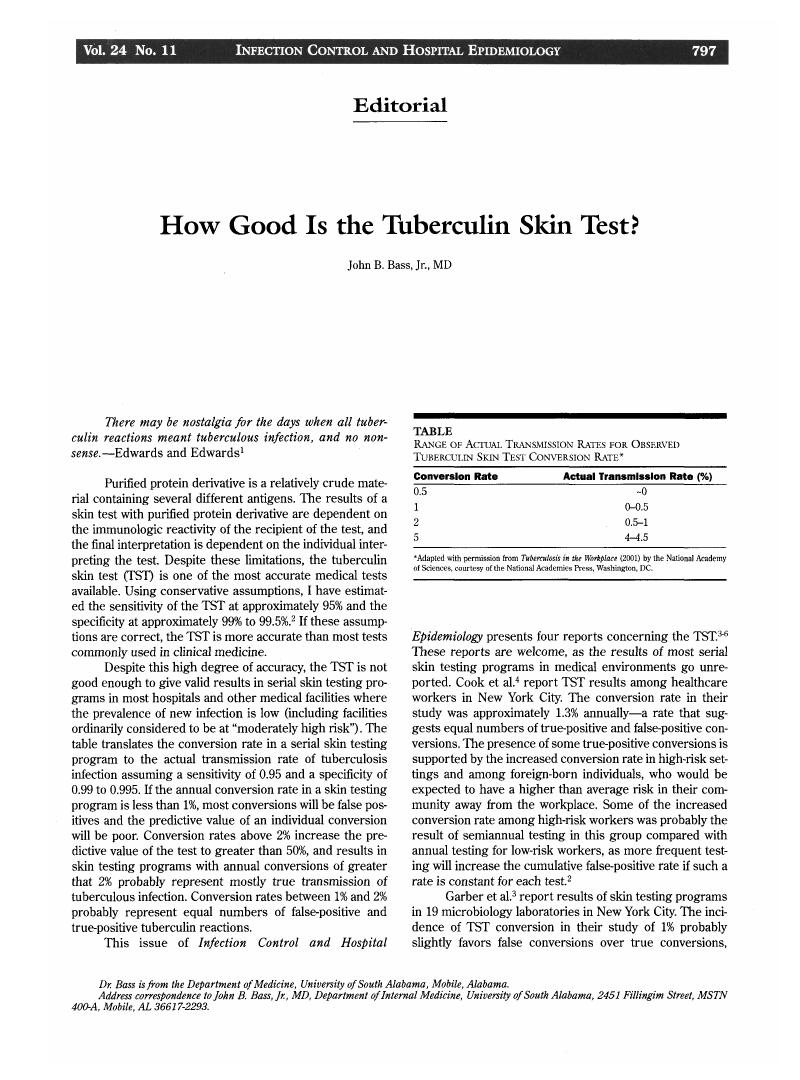Crossref Citations
This article has been cited by the following publications. This list is generated based on data provided by Crossref.
Friedman, Lloyd N.
Nash, Esther R.
Bryant, June
Henry, Susan
Shi, Julia
D'Amato, Joyce
Khaled, Ghada H.
Russi, Mark B.
O'Connor, Patrick G.
Edberg, Stephen C.
Pisani, Margaret A.
Cain, Hilary C.
Tanoue, Lynn
and
Weissman, David N.
2006.
High Rate of Negative Results of Tuberculin and QuantiFERON Tests Among Individuals With a History of Positive Skin Test Results.
Infection Control & Hospital Epidemiology,
Vol. 27,
Issue. 5,
p.
436.
Lima, Emerson Vasconcelos de Andrade
Lima, Mariana de Andrade
Duarte, Ângela
Marques, Cláudia
Benard, Gil
Lorena, Virgínia
and
Gomes, Yara
2011.
Investigação de infecção tuberculosa latente em pacientes com psoríase candidatos ao uso de drogas imunobiológicas.
Anais Brasileiros de Dermatologia,
Vol. 86,
Issue. 4,
p.
716.
Badaro, Roberto
Machado, Bruna. A. S.
Duthie, Malcolm S.
Araujo-Neto, C. A.
Pedral-Sampaio, D.
Nakatani, Maria
and
Reed, Steven G.
2020.
The single recombinant M. tuberculosis protein DPPD provides enhanced performance of skin testing among HIV-infected tuberculosis patients.
AMB Express,
Vol. 10,
Issue. 1,
Duthie, Malcolm S.
Pena, Maria T.
Khandhar, Amit P.
Picone, Alessandro
MacMIllen, Zachary
Truman, Richard W.
Adams, Linda B.
and
Reed, Steven G.
2020.
Development of LepReact, a defined skin test for paucibacillary leprosy and low-level M. leprae infection.
Applied Microbiology and Biotechnology,
Vol. 104,
Issue. 9,
p.
3971.
Duthie, Malcolm S.
and
Reed, Steven G.
2021.
Skin tests for the detection of Mycobacterial infections: achievements, current perspectives, and implications for other diseases.
Applied Microbiology and Biotechnology,
Vol. 105,
Issue. 2,
p.
503.
Jiao, Weijie
Huang, Yi
Lei, Ying
Zhang, Jun
and
Yu, Ming
2023.
Ultrasonography – a novel auxiliary interpretive approach for tuberculin-purified pure protein derivative skin test: a comparative study.
Therapeutic Advances in Respiratory Disease,
Vol. 17,
Issue. ,



